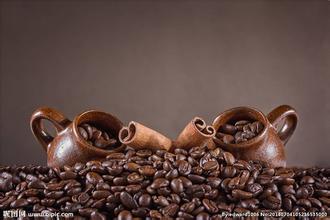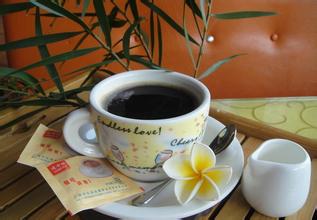The knowledge of coffee beans what is the knowledge of coffee?
1. Arabica species (scientific name Coffea arabica)
The origin of the Arabica species is the Abyssinia Plateau of Ethiopia (now the Ethiopian Plateau). In the early days, it was mainly eaten as medicine (Islamic couples used it as a secret medicine for physical and mental healing or to awaken the brain). It developed the habit of baking and drinking in the 13th century and was introduced to Europe through the Arab region in the 16th century. it has become a favorite drink all over the world.
Arabica coffee accounts for 75% of all coffee. Its excellent flavor and aroma make it the only coffee that can be drunk directly among these native species. But its resistance to dryness, frost, diseases and insect pests is low, especially the natural enemy of coffee-leaf rust, so the producing countries are committed to variety improvement. Sri Lanka is an example. Sri Lanka used to be a well-known coffee producer, but coffee farms were not spared by leaf rust at the end of the 19th century. Since then, Sri Lanka has turned to develop the black tea industry and rank in the same black tea kingdom as India.
Arabica coffee beans are mainly grown in South America (except parts of Argentina and Brazil), Central America and Africa (Kenya, Ethiopia and other places, mainly East African countries), Asia (including parts of Yemen, India and Papua New Guinea).
two。 Robsta species (scientific name Coffea robusta Linden)
Varieties resistant to leaf rust found in Congo, Africa, teach Arabica species to be more resistant to the disease. People like to compare the robusta species to the Arabica species of coffee. In fact, the robusta species was originally a mutant of the Congolese species (scientific name Cofffea canephora), so it is the Congolese species that should be compared with the Arabica species. To this day, however, the name of the Robusta species is commonly used by the public, and it is regarded as the same species as the Congolese species.
Arabica coffee beans grow at colder tropical high elevations, and the hot and humid zone that is not suitable for Arabica coffee is where robusta coffee grows. Robusta has a unique aroma (called "Rob smell", which some people think is moldy) and bitterness, accounting for only 2% of mixed coffee. 3%, the whole cup of coffee becomes Robusta flavor. Its flavor is so bright and strong that if you want to taste it directly, you have to consider it. It is generally used in instant coffee (which extracts about twice as much liquid coffee as Arabica), bottled coffee, liquid coffee and other industrial coffee. The content of caffeine is about 3.2%, much higher than 1.5% of Arabica species.
The main producers of Robusta species are Indonesia, Vietnam and West African countries centered around C ô te d'Ivoire, Algeria and Angola. In recent years, Vietnam has made more efforts to become one of the major coffee producing countries. Coffee production is also included in national policy (Vietnam also produces some Arabica coffee).
3. Liberian species (scientific name Coffea liberica)
West Africa, the origin of coffee grown in Liberia, has a strong adaptability to all kinds of environments, such as high or low temperature, humidity or dryness, except that it is not resistant to leaf rust and its flavor is worse than that of Arabica, so it is only traded or planted in some West African countries (Libya, C ô te d'Ivoire, etc.).
About 65% of the coffee in circulation in the world market is Arabica.
According to the statistics of the International Coffee Organization (ICO), excluding the domestic transactions of each coffee-producing country, about 65% of the coffee in circulation in the world market is Arabica and 35% is robusta. Arabica species are characterized by slender and flat grains, while robusta coffee beans are more round and can be easily distinguished by their shape.
But if you add in the hybrids of Arabica and Robusta-such as the variant Variedad Colombia, which is the main variety of Colombian coffee, has 1/4 Robusta pedigree, and therefore resistant to leaf rust and high yield-and its mutant subspecies of coffee beans, the classification is more complicated. Some Arabica coffee beans are quite close to the native species, while others are quite similar to the Robusta species. Even if the coffee has the same name (named from the place of origin), as long as the cultivated varieties are different, the flavor will be different.

Important Notice :
前街咖啡 FrontStreet Coffee has moved to new addredd:
FrontStreet Coffee Address: 315,Donghua East Road,GuangZhou
Tel:020 38364473
- Prev

A brief History of Coffee cultivation in Costa Rica Coffee Manor
Coffee was first introduced in 1720 according to CR official data. Baidu sources show that 1729 were imported from Cuba. In short, coffee has taken root in CR in the 18th century. It was first planted in the central valley (central valley). In the 19th century, the government vigorously promoted the cultivation of coffee, including the allocation of land as long as it was willing to cultivate coffee, and that it could become a landowner after five years of cultivation.
- Next

Coffee beans grown in the same environment
Mocha coffee (MOCHA) editor currently produced by Yemen for the best coffee, followed by Ethiopia's mocha; mocha coffee with lubrication in the acid to strong acid, sweet nature is particularly good, unique flavor, containing chocolate taste; with the temperament of a noble woman, is a very characteristic pure coffee. Colombia Coffee (COLOMBIA) Editor SUPREMO is the most famous Colombia coffee
Related
- Does Rose Summer choose Blue, Green or Red? Detailed explanation of Rose Summer Coffee plots and Classification in Panamanian Jade Manor
- What is the difference between the origin, producing area, processing plant, cooperative and manor of coffee beans?
- How fine does the espresso powder fit? how to grind the espresso?
- Sca coffee roasting degree color card coffee roasting degree 8 roasting color values what do you mean?
- The practice of lattes: how to make lattes at home
- Introduction to Indonesian Fine Coffee beans-- Java Coffee producing area of Indonesian Arabica Coffee
- How much will the flavor of light and medium roasted rose summer be expressed? What baking level is rose summer suitable for?
- Introduction to the characteristics of washing, sun-drying or wet-planing coffee commonly used in Mantenin, Indonesia
- Price characteristics of Arabica Coffee Bean Starbucks introduction to Manning Coffee Bean Taste producing area Variety Manor
- What is the authentic Yega flavor? What are the flavor characteristics of the really excellent Yejasuffi coffee beans?

